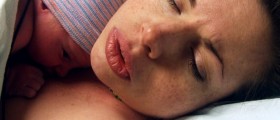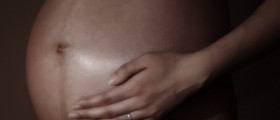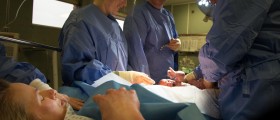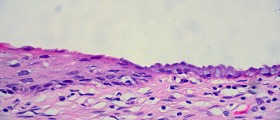
Delivery
During labor muscles of the uterus slowly stretch the cervix that opens so that the baby could get out. These muscles also push the baby into the vagina and provide labor. During pregnancy there are contractions, called Braxton-Hicks contractions. Muscles of the uterus contract, practicing and preparing uterus to work effectively during delivery. Cervix softens and ripens. Shortening and spreading of cervix can occur before labor begins. When a woman feels stronger contractions, similar to menstrual cramps, she usually thinks that labor has started. These contractions also called fake contractions usually stop after a while, but sometimes they can last for hours.What Causes Labor?
Physical and emotional readiness of mother and baby causes change in the mother's hormone level. Prostaglandins open and soften the cervix, and oxytocin causes the proper rhythmic contractions that spread the cervix. The position of the baby as well as mother's emotional state and physical status may affect delivery.The First Signs of Labor
Some physical signs inform potential mother that labor is about to begin. Fake contractions may become more intense and more frequent. Pregnant woman may have the diarrhea for several days before or on the day of the labor. In this way her body is cleaning and preparing for childbirth. She also may experience the presence of energy and desire for cooking and cleaning the house- instinct of nesting. As cervix begins to shorten and open, small mucous plug that closes it comes out. It looks like pink slime stained with blood from the ruptured capillaries which had previously held the plug attached to the cervix. As the baby's head makes pressure on membranes with amniotic fluid the membrane can snap. They most often pop it during the birth, and it rarely remains intact until birth. Fluid can be poured out but usually it is just dripping. Membranes are usually transparent and odorless. Some women have the impression that they pee in pants. If a woman is not able willingly to stop the flowing the reason is amniotic liquid. No matter how much liquid flows out, the body replaces it every few hours. There is no "dry birth." When the membrane breaks, labor will begin in 12-24 hours, although with some women liquid leaks for a few days or even weeks. After a while the uterus begins to contract regularly and hard. At first it may look like the abdominal pain, menstrual cramps, back pain, withdrawal and stretching in a tummy. In early labor, contractions occur at regular intervals of ten minutes, or they may be irregular and in wide intervals. More often, labor starts at night when woman is relaxed. At the beginning of labor, circle walking, long walks, long baths, making love if newt isn't broken or making love without penetration if it is broken, showering, embracing, kissing, twinging or sucking nipples, stimulate contractions and relaxes woman. One nurse said: "Pizza, beer and orgasm - our favorite induction. When woman is in bed or resting it can slow contractions and that's also good. Woman should combine movement with a short rests. When labor really starts, contractions become strong and rhythmic. Woman feels them as rising in waves, dragging and squeezing first in one place, and then spreading through the entire uterus, back and groin. After several of these contractions, a delivery performs including the birth of the child and removing the placenta.
















Your thoughts on this
Loading...